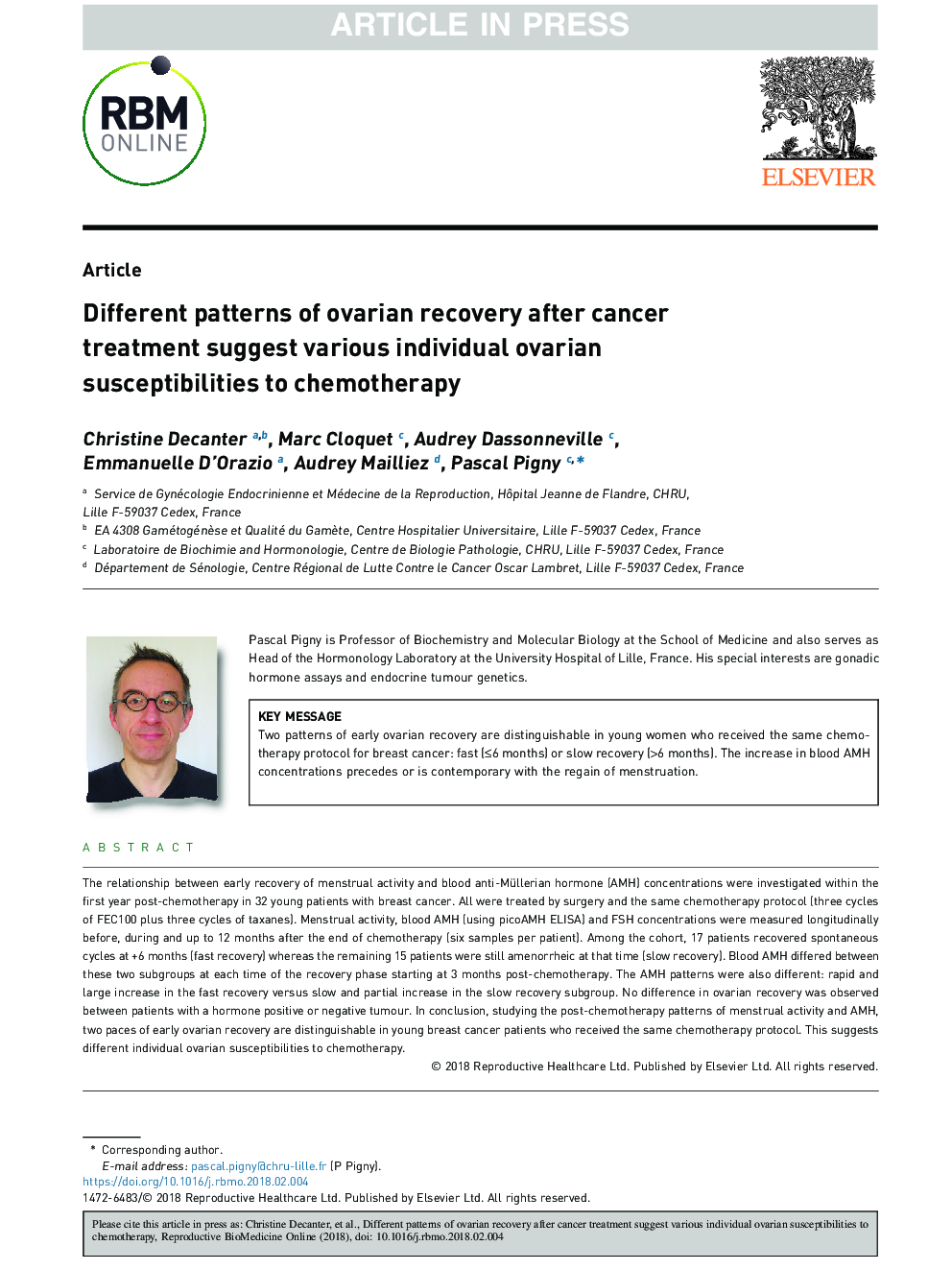| Article ID | Journal | Published Year | Pages | File Type |
|---|---|---|---|---|
| 8783838 | Reproductive BioMedicine Online | 2018 | 8 Pages |
Abstract
The relationship between early recovery of menstrual activity and blood anti-Müllerian hormone (AMH) concentrations were investigated within the first year post-chemotherapy in 32 young patients with breast cancer. All were treated by surgery and the same chemotherapy protocol (three cycles of FEC100 plus three cycles of taxanes). Menstrual activity, blood AMH (using picoAMH ELISA) and FSH concentrations were measured longitudinally before, during and up to 12 months after the end of chemotherapy (six samples per patient). Among the cohort, 17 patients recovered spontaneous cycles at +6 months (fast recovery) whereas the remaining 15 patients were still amenorrheic at that time (slow recovery). Blood AMH differed between these two subgroups at each time of the recovery phase starting at 3 months post-chemotherapy. The AMH patterns were also different: rapid and large increase in the fast recovery versus slow and partial increase in the slow recovery subgroup. No difference in ovarian recovery was observed between patients with a hormone positive or negative tumour. In conclusion, studying the post-chemotherapy patterns of menstrual activity and AMH, two paces of early ovarian recovery are distinguishable in young breast cancer patients who received the same chemotherapy protocol. This suggests different individual ovarian susceptibilities to chemotherapy.
Related Topics
Health Sciences
Medicine and Dentistry
Obstetrics, Gynecology and Women's Health
Authors
Christine Decanter, Marc Cloquet, Audrey Dassonneville, Emmanuelle D'Orazio, Audrey Mailliez, Pascal Pigny,
